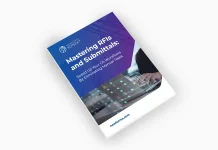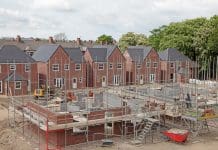What’s in a word? Mark Thackerey BSC TP MRTPI, Principle Consultant at Walsingham Planning explains why it’s difficult to interpret conservation legislation
The English language is wonderfully diverse, with umpteen/loads/lots of words meaning the same thing and still more with the subtlest variance in their meaning. It is the greatest yet most infuriating language in the world, not least to those of us who earn a crust by its written form or by reading the efforts of others. You read of a site “in close proximity to…” and must ask yourself “what other sort of proximity is there?” (Before I retire, I must get that one off my chest.)
What a shame, therefore, that we must use our language to write the law, especially planning law and particularly conservation law. If only the people producing the CA&LB Act 1990 had considered the chaos that might ensue from their use or misuse of words, they might have thought twice or thrice – you’re OK with numbers.
The problem with the written law, in this context, is that it’s meaningless, or it means something different to each person using it. In my experience, it tends to mean one thing to one group (let’s call them conservation officers) and something different to another group (let’s call them everyone else), but, hey, it keeps us all in work.
Three words that are a particular nuisance in our corner of the conservation world are “alteration”, “repair” and “character”. They are innocuous chaps around whom arguments rage, appeals are fought, and litigation abounds.
You only need LBC for “demolition” (just understood either side of Shimizu v Westminster), ”alteration” or “extension”, but the last two only apply if those works to a listed building “would affect its character as a building of special architectural or historical interest.” And there is the rub – who knows what constitutes an “alteration” (adaption/ amendment/adjustment/modification, etc.,)? Why is there no mention in relation to LBC, of “repairs”? Are they the same or does one start when the other stops? Is there a difference between a good repair and one that is poorly done? Why does a repair or an alteration need listed building consent, provided it’s done well?
When you’ve sorted that lot out, you can move on to the trickier question of if/how the character of the building might be affected. If it is not, then there is no need for LBC. Here the waters get deeper because the effect only relates to the building’s special architectural/historical character, not to its use. In refurbishing a pub, you would have to decide whether a new bar affected its character as a listed building, as a pub, maybe both or neither. Maybe the bar fitting was a perfect replica in an unspoilt C19 London boozer? It’s a minefield for which we have section 7 of the Act to thank. If only its creators had used words not in the thesaurus, words with only one meaning, which we knew and understood.
A repair must surely be straight forward. You get a hole in your jeans, you give it to your Mum, and she repairs it – simple. Nowadays, maybe she doesn’t, and it’s a fashion statement, but, in stitching up or flashing some leg, have you changed the character of your jeans? Of course, Mum may consider it to be an alteration, in which case you’re in trouble. Heaven forbid if she cuts them to make shorts, a change in character and probably demolition, or introduced a paisley wedge to create loons (OK, so I remember the Seventies), probably an extension.
The arbiter of what constitutes a repair, an alteration or a change in character is the Conservation Officer. Competent and knowledgeable as they are, this can become a self-fulfilling prophecy, in which all repairs are alterations, and all alterations affect the special character. Recently the LB equivalent of a CLOPUD has been introduced, letting applicants spend eight weeks seeking a ruling on the need for LBC before making the inevitable application, for fear of committing an offence. There are any number of equally knowledgeable and experienced experts elsewhere who might make such a judgement – spread the burden – but the government rejected this option.
Less flexible, tougher application process
With the advent of the NPPF/NPPG, we hoped for some clarification, but there was nothing. Conservation muddles along, to the disadvantage of applicants and probably to the detriment of the “heritage assets” – at least the names changed. If anything, conservation seems to have become harder, less flexible and with tougher application regimes. It cannot be beyond the wit of legislators to better define a repair and to exclude it from the need for LBC, perhaps allowing that a positive effect does not require permission. Maybe, when updating the list, Historic England could take the trouble to define/describe/suggest those features which are important to its character. Any number of historic building experts might help. The day of the unhelpful listing description should have passed by now. Maybe the negative NPPF options of “significant harm” and “less than significant harm” could be extended to encompass “no harm”, “not much harm” or “wow, it’s really rather good”.
Examples from recent WP experience:
Would LBC be required to:
- Add an air con unit to others on the second floor of a 1980s extension?
- Introduce attenuation into walls before replacing the lathes and plastering in lime plaster?
- Replace irretrievably damaged timber sash windows with new but identical replicas?
- Carcass decayed structural timbers, using materials, fittings and techniques to the appropriate BS?
- Open up an internal doorway last used in 1935?
Of course, LBC was required in each case.
In their near-continuous overhaul of the planning system, recent governments, simplifying the planning system, have continued to ignore conservation legislation, maybe assuming that it’s all perfectly clear – no need for an overhaul – but it is not fit for purpose, and this job is long overdue.
In the meantime, we struggle on with Section 7, in the fear that the law is indeed an ass/donkey/mule.
Mark Thackerey BSC TP MRTPI
Principle Consultant
Walsingham Planning
Tel: +44 1628 532244
mark.thackeray@walsingplan.co.uk
Please note: this is a commercial profile













